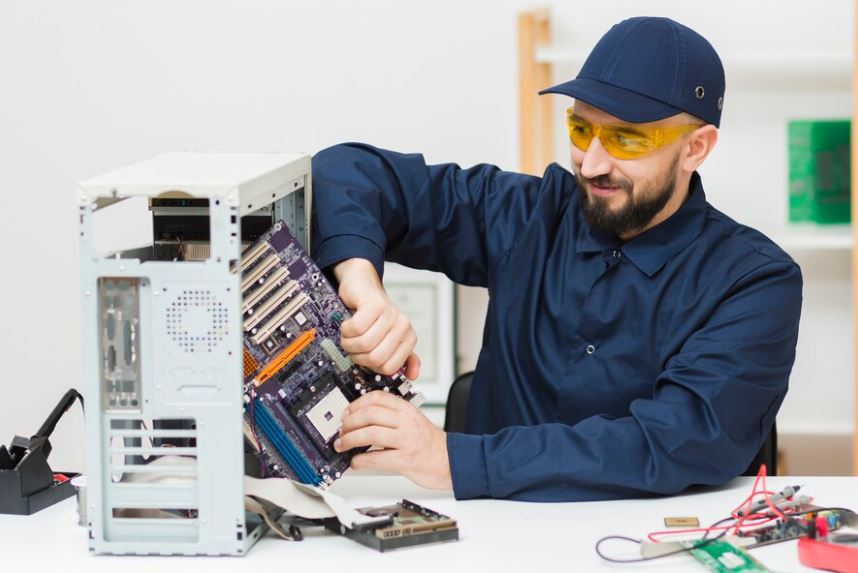How to Test Motherboard Without CPU: A Step-by-St…
April 14, 2018

The decision to upgrade your computer's CPU (Central Processing Unit) can be exciting, often driven by the desire for improved performance, enhanced multitasking capabilities, or the need to run more demanding applications. However, when it comes to replacing a CPU, one common question arises: Do you need to reinstall Windows after replacing the CPU?
Reinstalling Windows after replacing a CPU is often recommended when switching to a CPU with a different architecture to ensure compatibility and optimal performance. However, if the new CPU has the same architecture and precautions are taken, a complete reinstallation may not be necessary.
In this comprehensive article, we'll delve into the intricacies of CPU replacement and its implications on your Windows operating system. We'll explore why a CPU upgrade might necessitate a Windows reinstallation and scenarios where it may not be required. Additionally, we'll provide step-by-step guidance on handling the process effectively, ensuring a smooth transition to your new CPU.
Before we discuss the need for a Windows reinstallation, it's essential to understand the role of the CPU in your computer. The CPU is often called the "brain" of the computer, responsible for executing instructions, processing data, and managing the system's overall functionality. When you replace a CPU, you essentially introduce a new "brain" to your computer.

Different CPU Architectures: If you're upgrading to a CPU with a different architecture (e.g., switching from Intel to AMD or vice versa), it's highly recommended to reinstall Windows. Each CPU architecture may have distinct instruction sets and hardware requirements, and Windows is often optimized for a specific architecture during installation.
OEM Licenses: If you have an OEM (Original Equipment Manufacturer) license of Windows that came with your previous CPU, it is often tied to the specific hardware it was initially installed on. Upgrading your CPU might trigger licensing issues, as OEM licenses are typically non-transferable.
Maximizing Benefits: Reinstalling Windows offers the opportunity to optimize your system for the new CPU. Fresh installations are generally more efficient and can better use the improved processing power.
While reinstalling Windows is often recommended for a smooth transition, there are scenarios where it may not be strictly necessary:
Same Architecture: If you are upgrading to a CPU with the same architecture as your previous one (e.g., replacing an Intel Core i5 with a newer Intel Core i7 of the same generation), you may be able to avoid reinstalling Windows. However, preparing for potential driver and compatibility issues is still advisable.
Driver Updates: Before replacing your CPU, ensure that you have the latest drivers for the new processor. This proactive approach can help mitigate compatibility issues.
Windows Repair: Sometimes, you may experience minor issues or performance hiccups after a CPU upgrade. You can attempt to repair your existing Windows installation using built-in tools such as "Windows Repair" to address specific problems without reinstalling the entire OS.
If you decide that reinstalling Windows is the best course of action after a CPU replacement, follow these steps for a seamless transition:
Preparing for a CPU replacement without reinstalling Windows is feasible, especially if you're upgrading to a CPU with the same architecture. However, preparation is essential to ensure a smooth transition and avoid potential issues.
Before embarking on any hardware changes, data backup is the first and most crucial step. Regardless of whether you plan to reinstall Windows, always back up your important data to prevent data loss during the CPU replacement. Here's how to do it:
Creating a system image lets you capture a snapshot of your Windows installation, including all programs, settings, and files. This can be invaluable if anything goes wrong during the CPU replacement process. Follow these steps to create a system image:
To avoid potential driver conflicts when you replace the CPU, uninstall any software or drivers related to your old CPU. Follow these steps:
Ensure that you have the new CPU ready and compatible with your motherboard. Verify that the socket type, chipset support, and other technical specifications match your motherboard's requirements. Also, handle the new CPU carefully, avoiding static discharge using an antistatic wristband or touching a grounded metal surface before installation.
Gather the tools needed for the CPU replacement, such as a screwdriver for removing the CPU cooler, an antistatic wristband for grounding yourself, and thermal paste for reattaching the CPU cooler. The thermal paste ensures proper heat transfer between the CPU and the cooler.
Choose a clean and well-lit workspace for the CPU replacement. Make sure you have ample room to work and that you have a static-free environment. Avoid working on carpeted surfaces to reduce the risk of static discharge. Continue reading How to Remove Thermal Paste from CPU Pins would be best.
Refer to your motherboard's manual for specific instructions on how to replace the CPU. It will provide you with a step-by-step guide on safely removing the old CPU and installing the new one. Following these guidelines is crucial to prevent damage to your hardware.
Before replacing the CPU, enter your BIOS/UEFI settings and review your current configuration. Take note of any overclocking settings, RAM configurations, or other customizations you've made. Documenting these settings can be helpful when setting up your system with the new CPU.
Static electricity can be harmful to sensitive computer components. Attach an antistatic wristband to a grounded metal surface, such as the computer case, to avoid static discharge. This step helps protect your CPU and other components from potential damage.
Follow your motherboard manual's instructions to remove the old CPU and install the new one carefully. It's essential to align the CPU correctly with the socket and secure it gently in place. Avoid excessive force, as this can damage the CPU or motherboard.
After installing the new CPU, apply a small amount of thermal paste to the CPU's heat spreader. This paste ensures proper heat transfer between the CPU and the cooler. Reattach the CPU cooler, following the manufacturer's instructions. Make sure it's securely and evenly mounted to prevent thermal issues.
Once the new CPU is installed and the cooler is reattached, power on your computer. Windows should recognize the new CPU, and you can check the system information to verify the changes. Additionally, test your system for stability and performance.
After the CPU replacement, closely monitor your CPU temperatures and system performance. Use monitoring software to ensure the new CPU runs at the expected temperatures and your system functions optimally.
If everything is working correctly, you can restore your data and reinstall any software or applications you uninstalled in preparation for the CPU replacement. Use the backup you created earlier to recover your data.
In most cases, replacing a CPU may require a Windows reinstallation, especially if transitioning to a different CPU architecture. However, in scenarios where you are upgrading to a compatible CPU with the same architecture, careful preparation, and driver updates can help you avoid needing a complete reinstall. Regardless of your decision, always prioritize data backup, careful hardware handling, and following best practices to ensure a successful CPU upgrade without compromising your system's stability and performance.
Reinstalling Windows after a CPU replacement is often necessary due to hardware compatibility issues, potential driver conflicts, and to ensure optimal system performance with the new CPU.
The main reasons include different CPU architectures, driver and registry issues, potential licensing and activation conflicts, and the opportunity to optimize system performance.
If the new CPU has the same architecture as the previous one, you may be able to avoid reinstalling Windows. However, precautions and driver updates are still recommended.
Yes, you can reinstall Windows without losing data by backing up your essential files before initiating the installation. You can then restore your data after the installation is complete.
The key steps include backing up data, uninstalling old CPU-related drivers, replacing the CPU, booting from installation media, performing a custom installation, installing drivers, and restoring data.
If you have a valid Windows product key for a different edition or version, you can reinstall Windows with that edition or version during the installation process.
Comments
Write a comment